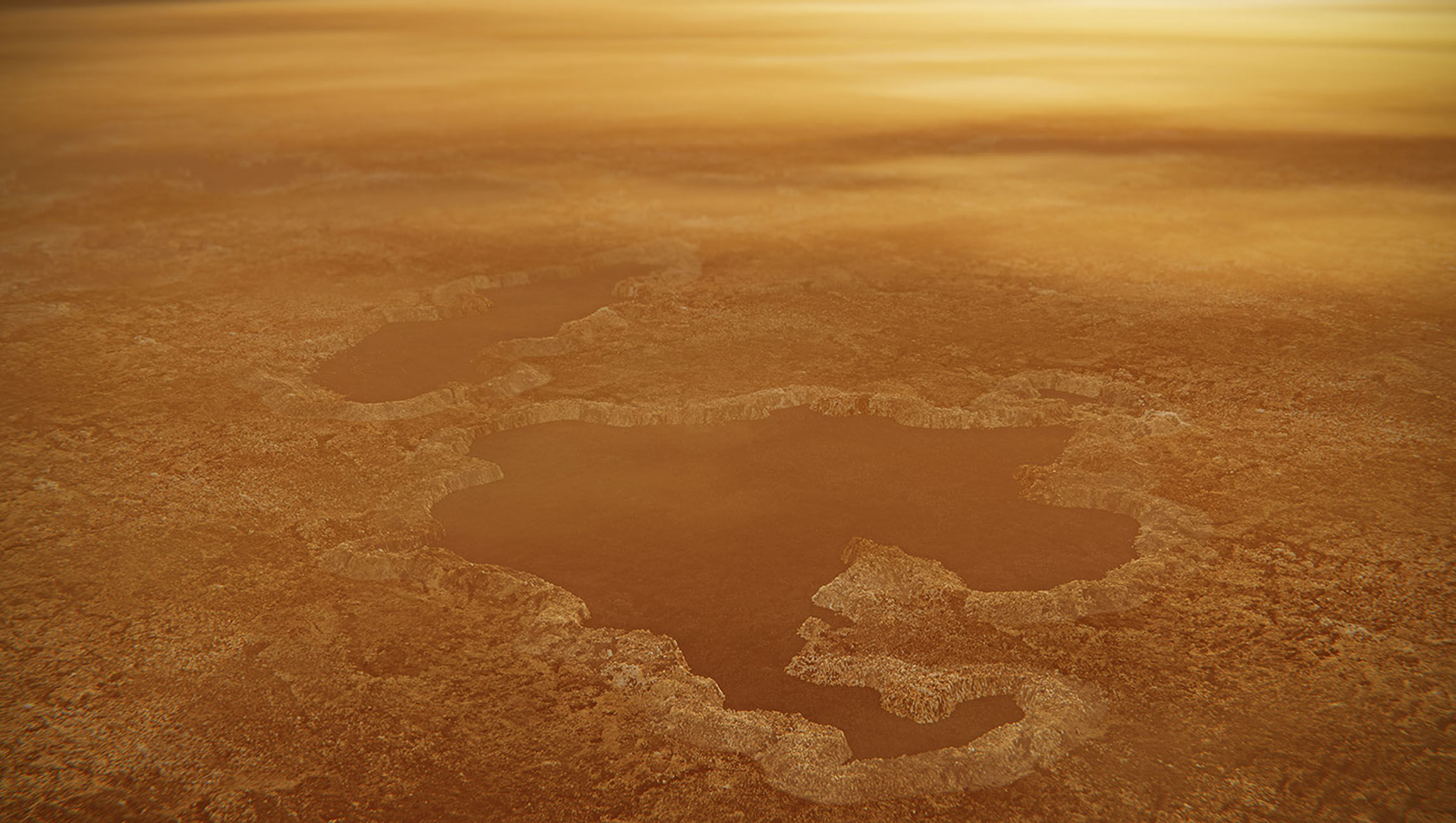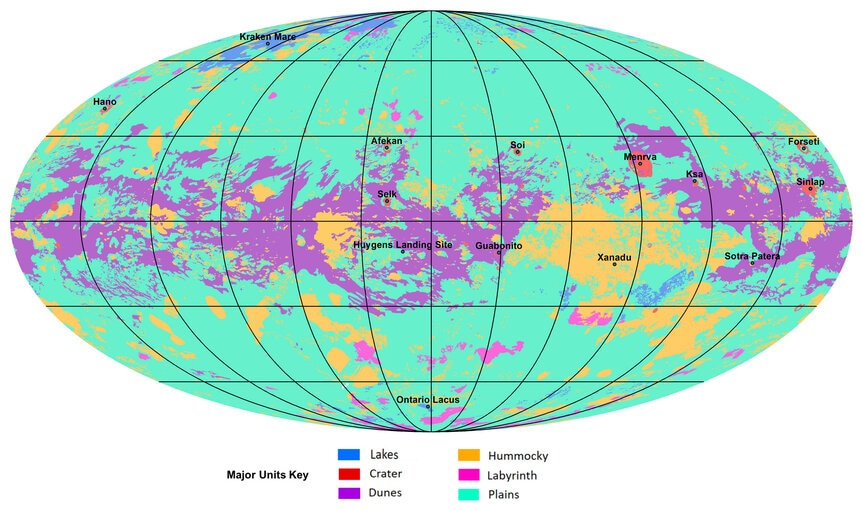Create a free profile to get unlimited access to exclusive videos, sweepstakes, and more!
Lakes, dunes, mountains, & more: Titan surface map reveals landscape almost as diverse as Earth

If there’s life to be found elsewhere in the solar system, Saturn’s largest moon may be one of the best places to look. Space scientists have long suspected Titan of harboring one of the most opportune environments for life to exist, and now that the entire moon’s surface has been mapped in unprecedented detail, they’re probably not backing away from the idea.
Thanks to more than a decade’s worth of flyby data from the Cassini-Huygens mission, the atmosphere-dense moon’s surface topography, as well as the its major geological features, has begun giving up its long-held secrecy. According to the European Space Agency, one of three Cassini-Huygens partners (NASA and The Italian Space Agency are the others), the Cassini probe conducted more than 120 passes during its stint in the Saturn system between 2004 and 2017.
The mapping data that the craft returned to Earth reveals a terrain that, says ESA, rates among the most varied and diverse, from pole to pole, of any body in the solar system:
Stacking longitudinally so that the greatest topographic variety lies along a broad equatorial band, Titan's landscape has an abundance of almost everything a hypothetical extraterrestrial critter could want — except, of course, liquid water. Long known to be atmosphere-rich in carbon compounds, Titan is peppered with stable liquid methane and ethane lakes, windswept dunes, variegated hills and mountains (“hummocky” terrain, in planetary geology-speak), “labyrinths” (valleys and gorges shaped by tectonics and erosion), and, farther from the equator, vast open plains.
Until Cassini, Titan’s thick atmosphere obscured much of its surface from analysis. Now that researchers have a detailed surface map, they’re struck by how Earth-like Titan’s terrain is — as well as the atmospheric forces that continue to shape it.
“Titan has an active methane-based hydrologic cycle that has shaped a complex geologic landscape, making its surface one of most geologically diverse in the Solar System,” researchers said in the setup to a new study on the project, published recently in the journal Nature Astronomy. “Despite the differences in materials, temperatures and gravity fields between Earth and Titan, many of their surface features are similar and can be interpreted as products of the same geologic processes.”
Titan is much colder than Earth, and scientists believe its liquid water lies locked away in vast subsurface oceans. But whether life can exist there or not, the giant moon’s active, Earth-like weather cycle and dizzying variety of surface features would at least make it one of our first stops when it’s time to charter that first space tour.



























